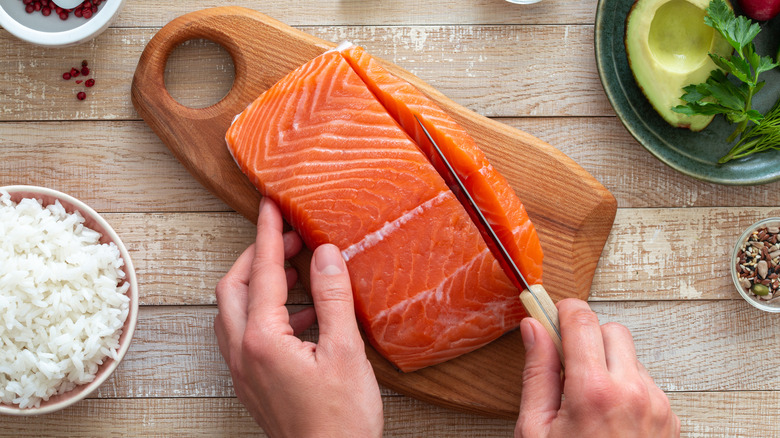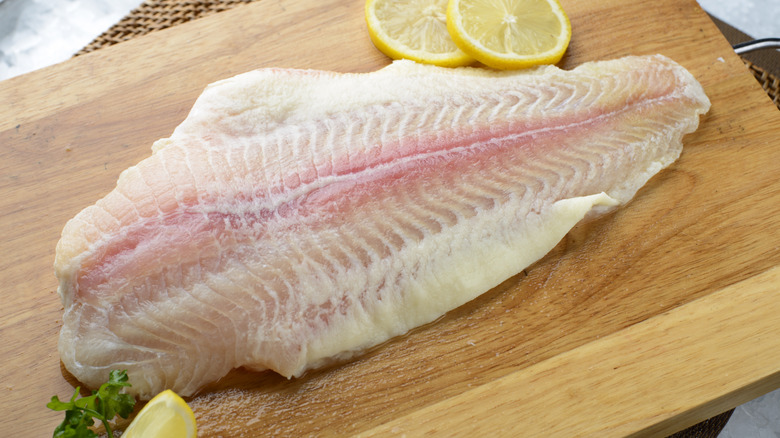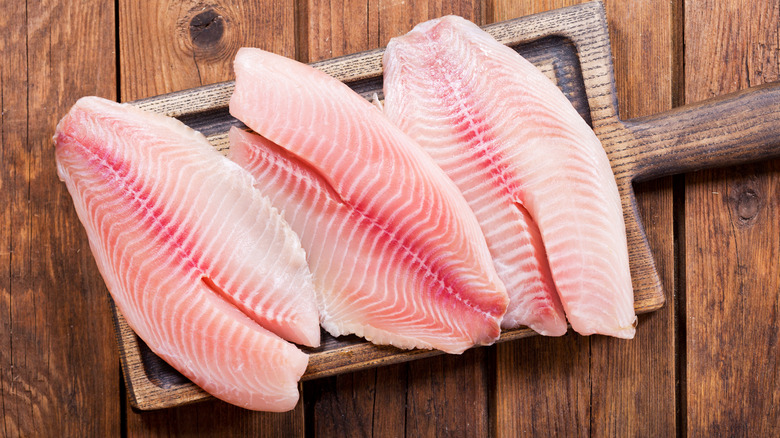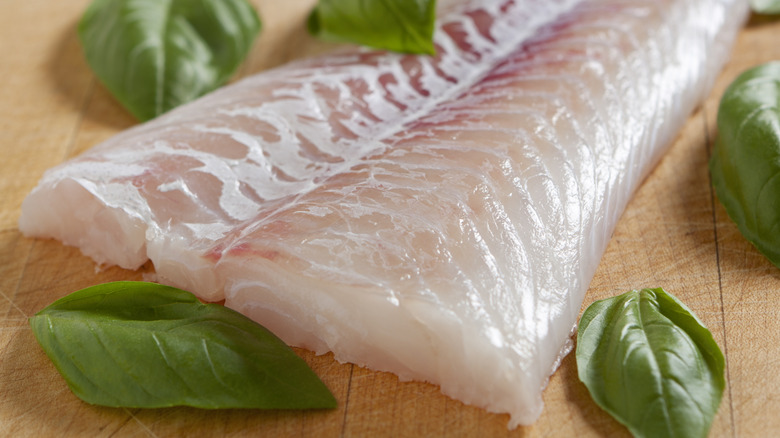The 3 Basic Fish Fillet Cuts You Should Know
If you've ever been in the mood for seafood but decided against it because you just aren't sure how to begin tackling an umami-flavored fish dish in the kitchen, you are not alone. Seafood can be a daunting cuisine to dive into — pun intended — especially when there are so many different cuts and styles of fish to distinguish between.
For those just beginning your adventure into the world of seafood preparation, we recommend starting with a simple fish fillet. A fillet refers to the meat on either side of a fish that usually also contains some of the fish skin, although that can be easily removed with a quick slice of your knife. Whether you are prepping for a homemade fried fish sandwich or a poached salmon with dill sauce, it's important to know the different ways to cut into your fish fillet.
The three ways that a fillet can be sliced are whole fillet style, J-cut, or V-cut. Deciding between these different techniques is up to your individual taste and texture preference, the portion of fish you require, and how you are planning to cook your fish.
Prepping a whole fillet will take you a little extra time
Whole fillets of fish are typically the most common cuts found in the seafood aisle of a grocery store. This is a great cut to choose if you are feeding a slightly larger crowd or if you enjoy the extra crispy skin that is usually attached to the fillet. However, you will have to pay close attention to bones.
While all fillet cuts avoid the fish's larger bones (such as the spine and head), there are smaller pin bones that can be present in the fish when the whole fillet is cut. Eating a pin bone can be an extremely uncomfortable experience, so we recommend giving your whole fillet a thorough examination before seasoning and searing. Luckily, you can easily remove pin bones from a fish fillet using a pair of clean tweezers.
For a leaner fish fillet, opt for a J-cut
A J-cut of fish is usually easy to determine due to its distinct cut down the middle of the fillet. This was done to remove the nape of a fish, a piece of fat located near what was once the fish's head area. Those who prefer to have this fatty section removed are often looking for a leaner cut of fish without tougher, chewier pieces. The pin bones are also typically removed in a J-cut fillet.
The V-cut is ideal for those who enjoy their fillets on the fatty side
If you are looking for a portion of fish meat with the fatty nape section still attached, the V-cut is your answer. This particular part of the fish provides a slightly different flavor and texture experience than J-cut fillets. This cut of fish has also already been combed through for any remaining pin bones, so there is no need to worry about biting into anything sharp.




